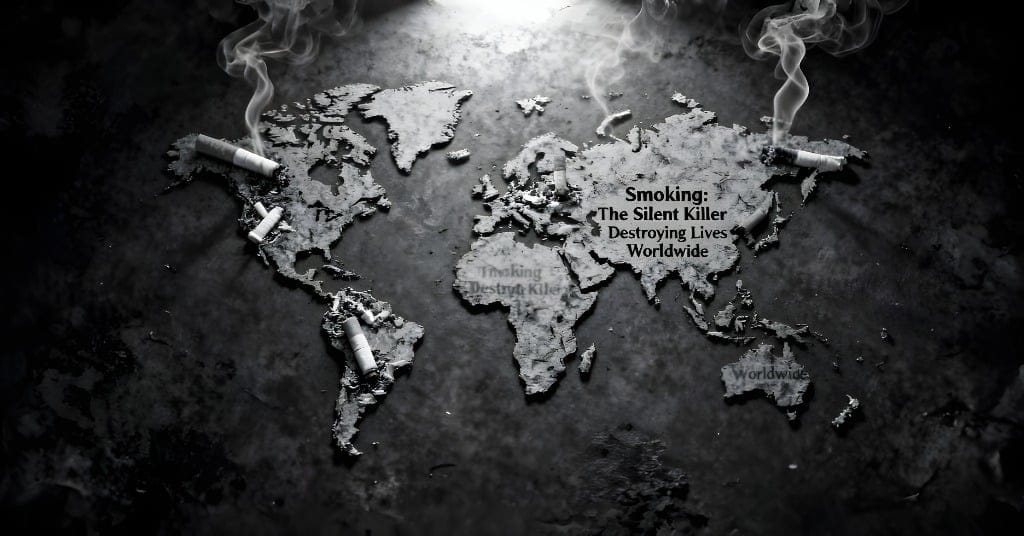Why Smoking Remains a Global Threat
Smoking is one of the most common yet most harmful habits worldwide. Despite decades of awareness campaigns, millions still engage in smoking, risking their lives daily. This addictive behavior affects nearly every organ of the body, leading to fatal diseases and long-term health complications. Whether it’s tobacco, cigars, or e-cigarettes, the impact of smoking extends far beyond the individual—it harms families, communities, and public health systems globally.
The History and Culture Behind Smoking
Historically, tobacco was seen as a symbol of luxury, peace, or even healing. Indigenous tribes used it in rituals long before cigarettes were mass-produced. However, by the 20th century, tobacco addiction had turned into a health crisis. Advertising campaigns romanticized cigarette use, making smoking habits appear glamorous and sophisticated. Unfortunately, this marketing success came at a devastating cost—millions of deaths due to smoking-related diseases such as lung cancer, heart disease, and stroke.
The Science of Addiction: Why People Keep Smoking
At the heart of this habit lies nicotine, a powerful chemical that stimulates the brain’s reward system. Each puff releases dopamine, giving smokers a brief feeling of pleasure and relaxation. However, this relief is temporary, and the body quickly becomes dependent on nicotine. Over time, tolerance develops, and quitting becomes an uphill battle.
Smoking cessation is difficult because nicotine withdrawal causes anxiety, irritability, and restlessness. That’s why breaking the cycle of tobacco addiction often requires professional help, counseling, and strong motivation.
How Smoking Damages the Human Body
The harmful effects of smoking are extensive and well-documented. Cigarettes contain more than 7,000 chemicals, including tar, formaldehyde, and carbon monoxide. These substances harm every part of the body, from the lungs to the skin.
- Lungs: Smoking destroys lung tissue, reducing the capacity of the respiratory system to absorb oxygen. It also leads to chronic obstructive pulmonary disease (COPD) and persistent chronic cough.
- Heart: Smokers are twice as likely to develop heart disease because smoking thickens the blood, raises cholesterol, and damages arteries.
- Brain: Smoking can impair mental clarity and is linked with anxiety and depression. It disrupts neurotransmitter balance, negatively affecting mental health.
- Skin and Appearance: Regular cigarette use causes premature wrinkles and dull skin, making smokers appear older than their actual age.
Even secondhand smoke—the smoke inhaled by people nearby—poses serious risks. Non-smokers exposed to passive smoking can suffer from asthma, breathing issues, and even cancer.
The Hidden Costs of Smoking
Beyond the health damage, the economic cost of inhaling smoke is massive. Billions of dollars are spent annually on healthcare, insurance, and loss of productivity. Countries worldwide lose a significant portion of their GDP treating smoking-related diseases. Families also bear financial strain when a smoker becomes ill or dies prematurely.
A report from the World Health Organization (WHO) states that tobacco kills over 8 million people each year, including 1.3 million non-smokers exposed to secondhand smoke (source).
inhaling smoke and Youth: The Emerging Crisis
Despite strict regulations, youth inhaling smoke remains a major concern. Teenagers are often drawn to cigarettes due to peer pressure, curiosity, or social media influence. The tobacco industry has cleverly marketed flavored vapes and sleek packaging to attract young users.
Unfortunately, early exposure leads to faster nicotine dependence, making it harder for teens to quit later in life. Schools and parents must collaborate to promote inhaling smoke awareness and teach children about the dangers of tobacco addiction.
Smoking and Mental Health: A Complex Connection
Many people turn to inhaling smoke to cope with stress, anxiety, or emotional pain. While nicotine may offer short-term relief, it worsens mental health in the long run. Studies show that smokers experience higher rates of depression, fatigue, and mood swings compared to non-smokers.
This relationship forms a vicious cycle: stress leads to inhaling smoke, and inhaling smoke increases stress. Breaking free from this loop requires understanding the psychological side of inhaling smoke habits and addressing emotional triggers.
The Path to Quitting: Hope for Every cigarette use
Quitting cigarette use is challenging but absolutely possible. Millions have successfully overcome nicotine addiction with the right support and mindset.
Here are some proven strategies for smoking cessation:
- Set a Quit Date: Decide when you will stop and commit to it.
- Seek Professional Help: Doctors can prescribe medications or nicotine patches to ease withdrawal.
- Join Support Groups: Talking to others who share your struggle provides motivation and accountability.
- Replace the Habit: Engage in healthy activities like walking, meditation, or exercise.
- Track Progress: Celebrate small wins—every smoke-free day is a victory.
You can also read our detailed post on “How to Quit Smoking Naturally” for practical step-by-step guidance on breaking free from this habit.
The Role of Society in Combating Smoking
Governments, NGOs, and communities must unite to fight smoking-related diseases. Policies like tobacco taxes, smoke-free public areas, and warning labels have proven effective in reducing cigarette use.
Public health campaigns are crucial to promoting cigarette use awareness and helping individuals make healthier lifestyle choices. Schools and workplaces should encourage discussions about the dangers of passive smoking and create supportive environments for those who wish to quit.
Choose Health Over Habit
Cigarette use is not just a personal decision—it’s a public issue with global consequences. Every cigarette smoked contributes to disease, loss, and suffering. Whether you are a smoker or know someone who smokes, the best time to act is now.
By making conscious lifestyle choices, spreading cigarette use awareness, and supporting one another, we can move toward a smoke-free world. Remember: quitting cigarette use may seem hard, but living with its consequences is far harder.
Your body has the power to heal once you stop. One decision today can save your future tomorrow.

